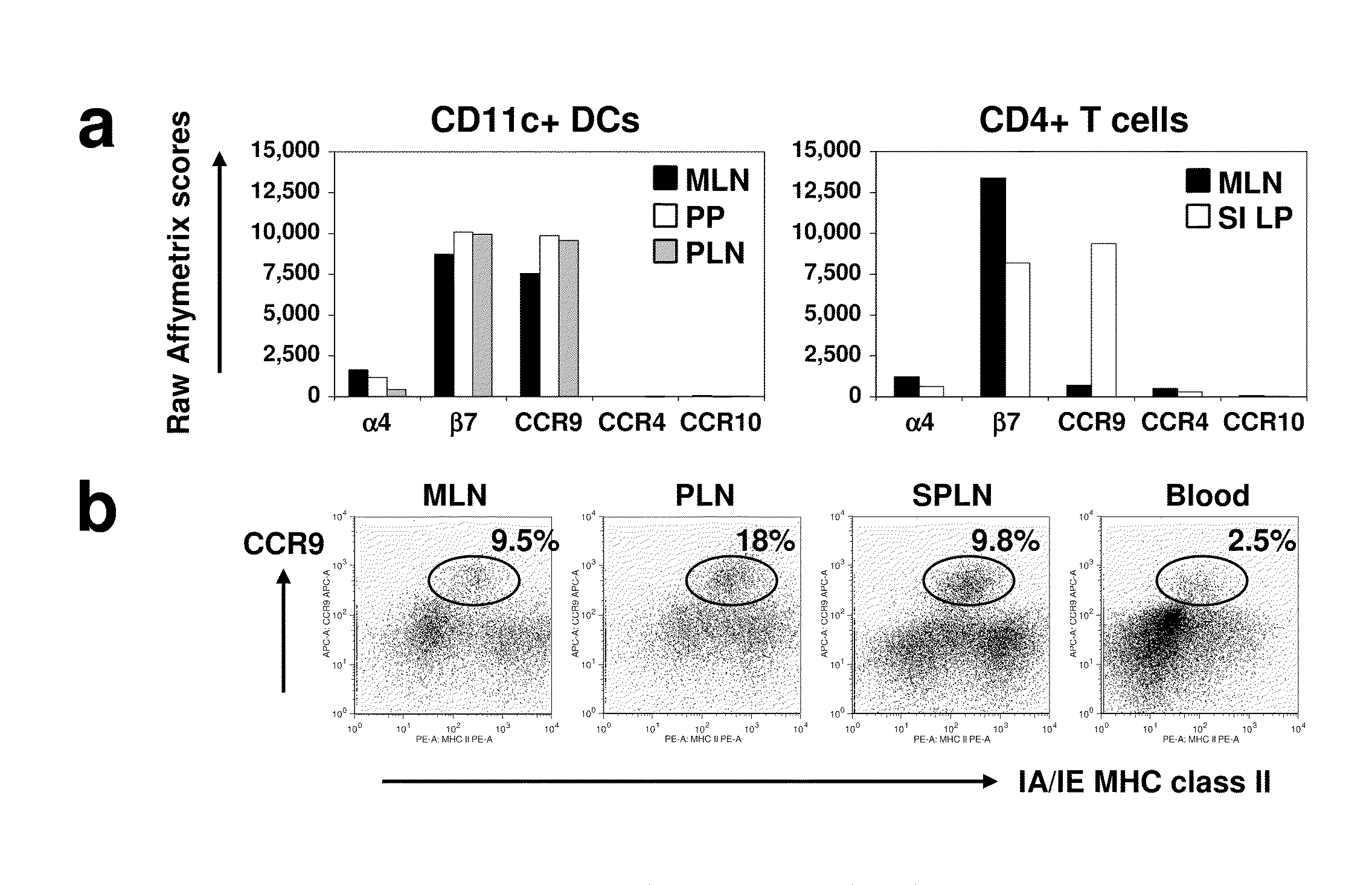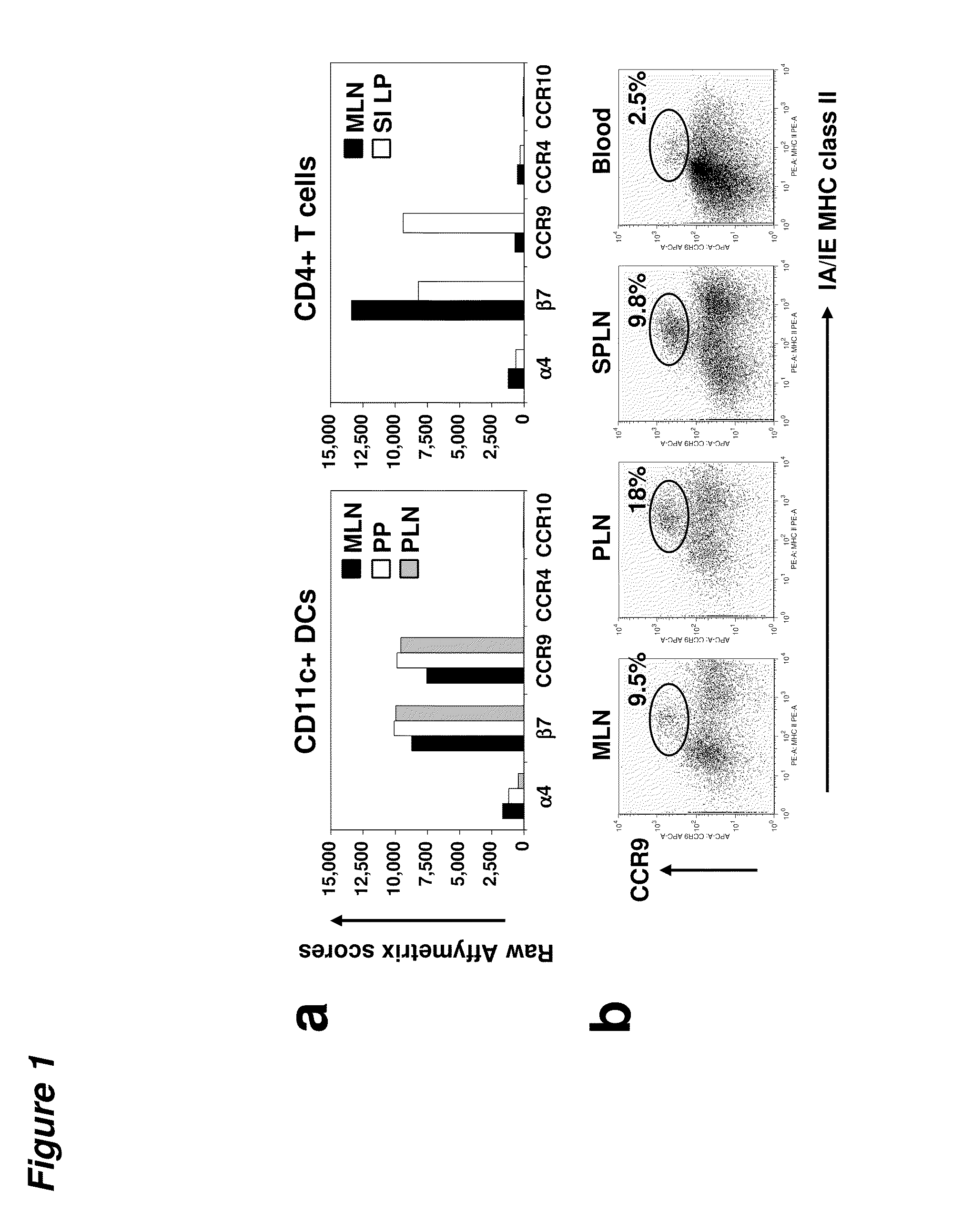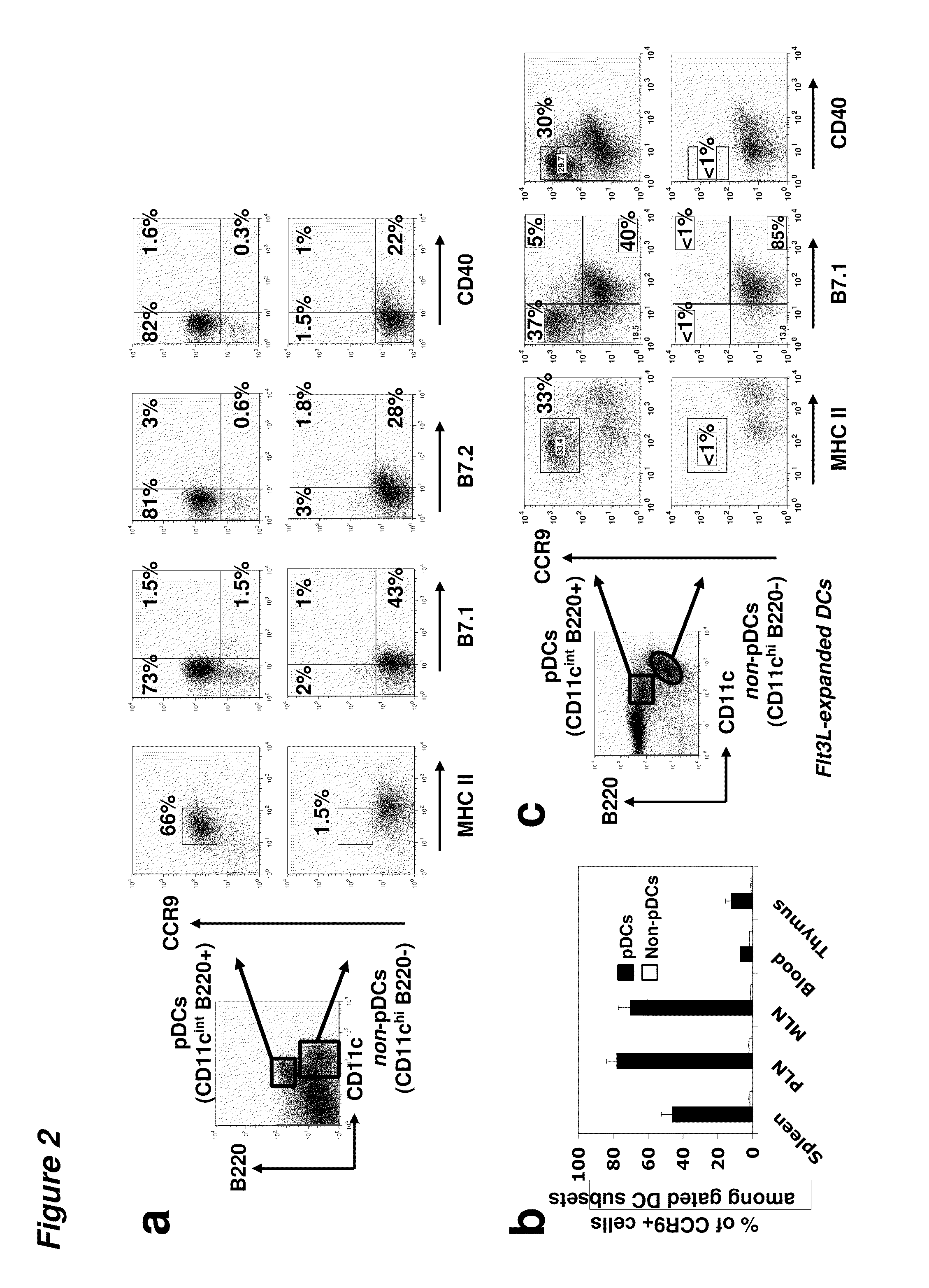Tolerogenic populations of dendritic cells
a dendritic cell and tolerogenic technology, applied in the field of tolerogenic populations of dendritic cells, can solve the problems of ineffective antigen response, undesirable immune response, no studies have taken advantage,
- Summary
- Abstract
- Description
- Claims
- Application Information
AI Technical Summary
Benefits of technology
Problems solved by technology
Method used
Image
Examples
example 1
[0095]The chemokine receptor CCR9 is selectively expressed on pDCs of immature phenotype in vivo. CCR9 expression was rapidly downregulated in response to maturational signals and could effectively distinguish endogenous pDCs of immature and mature phenotypes. CCR9+ pDCs constituted a sizeable fraction of the pDC compartment in resting secondary lymphoid tissues; in addition, they are substantially more efficient than CCR9− pDCs at inducing regulatory T cells and they inhibit antigen-specific immune responses both in vitro and in vivo. Finally, sorted and adoptively transferred CCR9+ (but not CCR9−) pDCs effectively prevent acute GVHD, providing long-term suppression of graft versus host responses in an allogeneic T cell transfer model.
Results
[0096]DCs express gut-specific T-cell homing receptors. Using a gene expression profiling approach, we evaluated the expression of tissue specific homing receptor transcripts in DCs from different tissues in an effort to explore the homing patt...
example 2
[0128]As shown in FIG. 9, the lethal GVHD of C57BL / 6 recipients induced by BALB / c CD4+ CD25− effector T cells can be suppressed by co-injected C57BL / 6 CD103+ cDCs. (A) C57BL / 6 mice received 2×500 rads of total body irradiation, 5×106 BALB / c T-cell depleted bone marrow cells and 2.5×106 BALB / c splenic CD4+CD25− T cells. Three cohorts of mice received either coinjected sorted CD103+ cDCs, CD103− cDCs or no DCs at all (no DC control) at 0.5-1×106 DCs / mouse from pooled peripheral lymph nodes of flt3L / B16-treated B6 mice. Conventional DCs were sorted based on their expression of CD11c (CD11chigh) but lack of expression of B220 and lineage markers (CD3, CD19 and NK1.1). Representative data from two independent experiments with 5 animals per group are shown. (B) Splenic CD4+ BALB / c T cells (2×105) were cultured for 6 days with sorted CD103+ or CD103− mDCs (1×105 cells) from pooled lymph nodes isolated from flt3L / B16-treated B6 mice. Cytokine expression levels (in pg / ml) determined by sandw...
PUM
| Property | Measurement | Unit |
|---|---|---|
| concentrations | aaaaa | aaaaa |
| volume | aaaaa | aaaaa |
| concentration | aaaaa | aaaaa |
Abstract
Description
Claims
Application Information
 Login to View More
Login to View More - R&D
- Intellectual Property
- Life Sciences
- Materials
- Tech Scout
- Unparalleled Data Quality
- Higher Quality Content
- 60% Fewer Hallucinations
Browse by: Latest US Patents, China's latest patents, Technical Efficacy Thesaurus, Application Domain, Technology Topic, Popular Technical Reports.
© 2025 PatSnap. All rights reserved.Legal|Privacy policy|Modern Slavery Act Transparency Statement|Sitemap|About US| Contact US: help@patsnap.com



